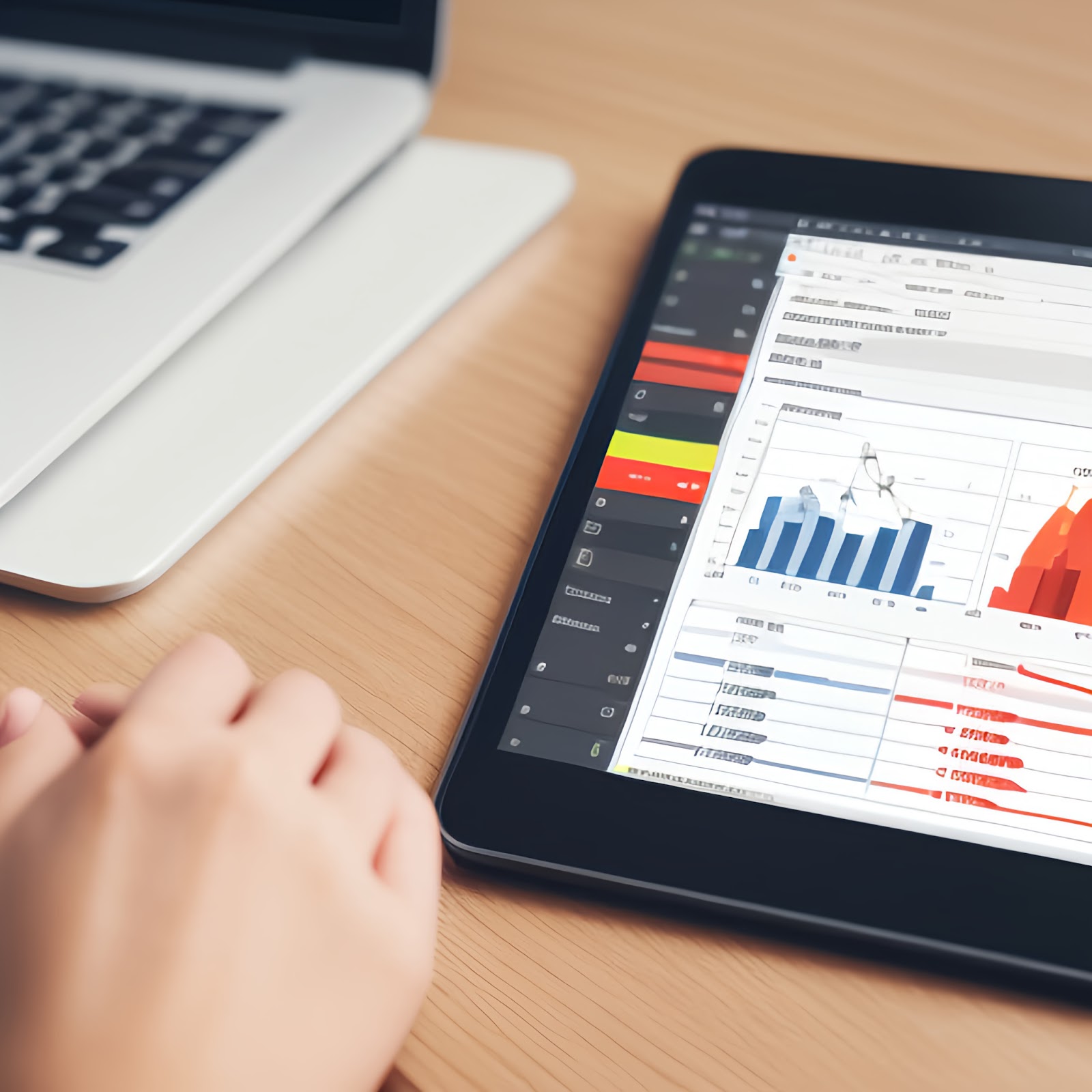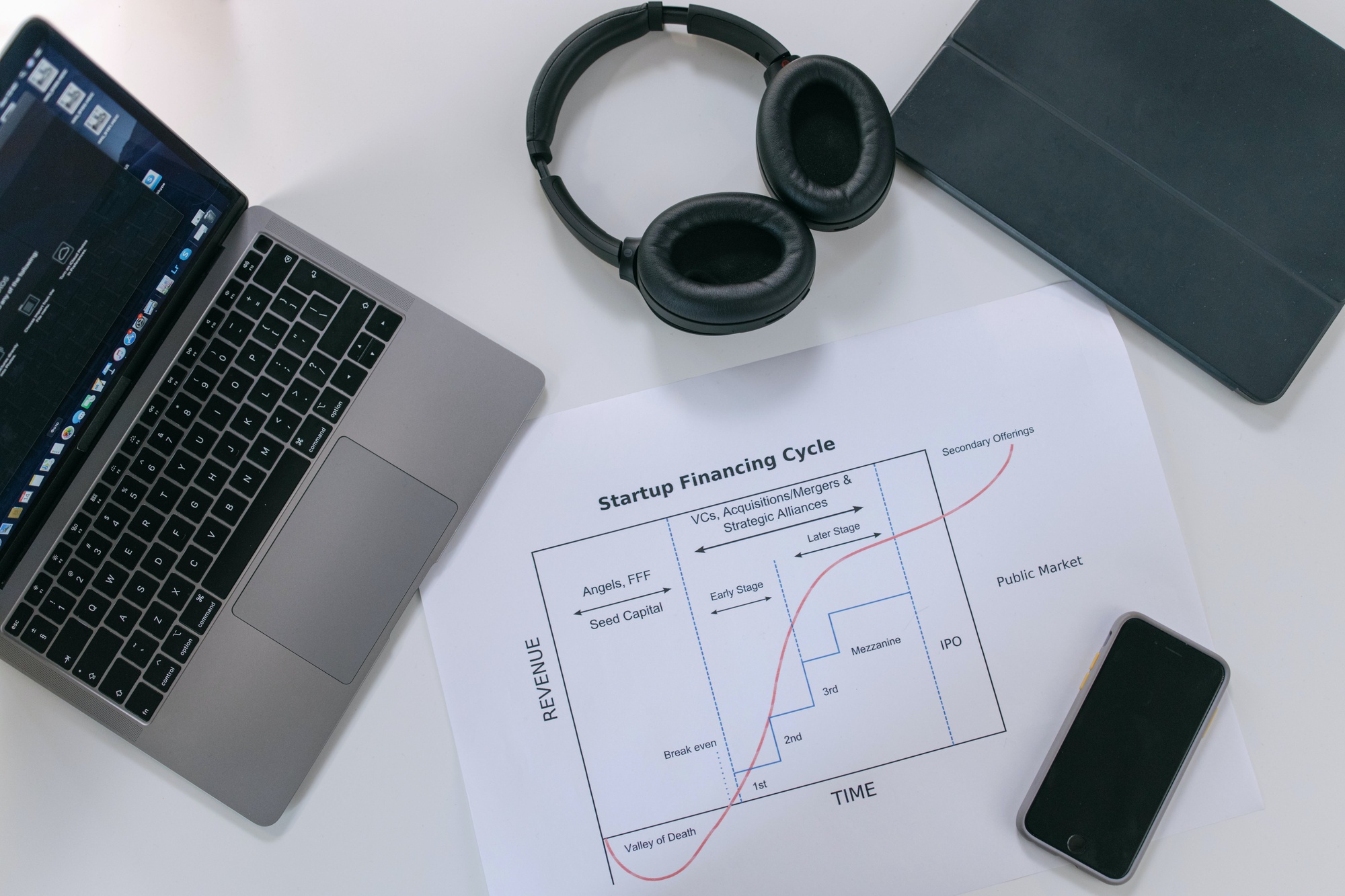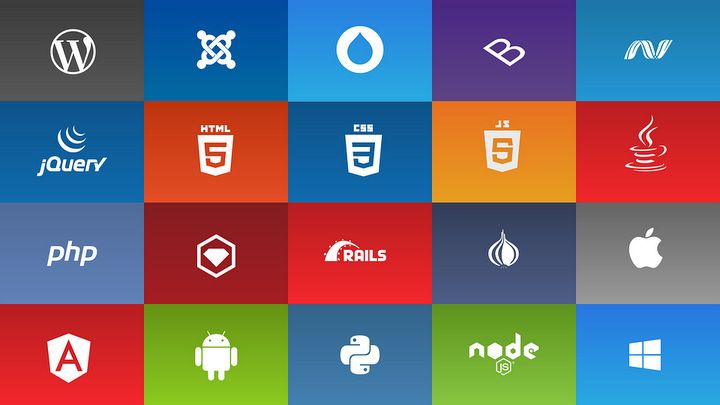Are you considering developing an app for your business but unsure about the costs involved? Understanding app development costs is essential for budgeting effectively and maximising your return on investment (ROI). In this article, we will explore the key factors that influence app development costs and provide you with practical tips on how to budget for your project.
Developing an app involves various components, including design, development, testing, and deployment. Each of these stages contributes to the overall cost of the project. Factors such as the complexity of your app, the features you want to incorporate, the platform(s) you plan to target, and the level of customization required all impact the cost.
By gaining a deeper understanding of these factors and how they influence app development costs, you can make informed decisions and create a realistic budget. This will enable you to allocate resources effectively and maximise the return on your investment.
So, if you're ready to take the next step in app development and want to ensure you budget effectively, keep reading for valuable insights and practical tips to guide you along the way.
Factors that influence app development cost
The cost of app development can vary significantly based on several factors. Understanding these factors will help you anticipate and plan for the expenses involved. Here are the key factors that influence app development cost:
1. Complexity of the App
The complexity of your app plays a crucial role in determining the overall cost. Simple apps with basic functionality will generally cost less to develop compared to complex apps that require advanced features, integration with external systems, and customised user interfaces. The more complex the app, the more time and expertise it will require, resulting in higher development costs.
2. Features and Functionality
The features and functionality you want to incorporate into your app will have a direct impact on the development cost. Apps with basic features such as user registration, content display, and basic interactions will be less expensive to develop. However, if you require advanced features like real-time notifications, social media integration, payment gateways, or complex algorithms, the development cost will increase accordingly.
3. Platform(s) and Devices
The platform(s) and devices you choose to target also influence app development costs. Developing an app for a single platform, such as iOS or Android, will generally cost less compared to developing for multiple platforms. Additionally, the cost may vary depending on the devices you plan to support, such as smartphones, tablets, or wearables. Each platform and device requires specific programming languages, frameworks, and testing, which can increase the development cost.
4. UI/UX Design
The user interface (UI) and user experience (UX) design of your app are crucial for its success. Investing in intuitive and visually appealing designs can enhance user engagement and satisfaction. However, high-quality UI/UX design comes at a cost. The complexity of the design, the number of screens, custom animations, and interactions all contribute to the overall development cost.
5. Customization Requirements
If you require extensive customization of your app to align with your brand identity or specific business needs, it will impact the development cost. Customizing app elements such as colors, fonts, layouts, and branding elements requires additional time and effort from designers and developers, resulting in higher costs.
6. Integration with Third-Party Systems
If your app needs to integrate with external systems or APIs, such as payment gateways, social media platforms, or analytics tools, it will add to the overall development cost. Integrations require additional development and testing to ensure seamless data exchange and functionality between the app and the third-party systems.
By considering these factors and discussing them with your development team, you can estimate the app development cost more accurately and plan your budget accordingly. Next, let's delve into the different types of app development costs to gain a comprehensive understanding of the expenses involved.
Understanding the different types of app development costs
When it comes to app development costs, it's important to have a clear understanding of the different types of expenses involved. This will help you allocate your budget effectively and avoid any surprises along the way. Here are the major types of app development costs:
1. Development Cost
The development cost includes the expenses associated with designing, coding, and testing your app. This typically accounts for the largest portion of the overall app development budget. The complexity of your app, the number of features, and the platforms you choose to target will determine the development cost.
2. Design Cost
The design cost covers the expenses related to creating the UI/UX design for your app. This includes wireframing, prototyping, visual design, and user testing. Investing in high-quality design is crucial to creating an engaging and user-friendly app. The design cost may vary

depending on the complexity of the design and the number of screens involved.
3. Infrastructure Cost
The infrastructure cost includes expenses related to hosting, server setup, and maintenance. If your app requires a backend infrastructure to store data, handle user accounts, or manage transactions, you need to consider the infrastructure cost in your budget. Cloud hosting services like Amazon Web Services (AWS) or Microsoft Azure are popular choices for app infrastructure.
4. Testing and Quality Assurance Cost
Testing and quality assurance are essential to ensure your app functions correctly and provides a seamless user experience. The cost associated with testing varies depending on the complexity of your app and the number of devices and platforms you target. It includes activities such as functional testing, compatibility testing, performance testing, and security testing.

5. Deployment and App Store Cost
Once your app is ready, you need to deploy it to the respective app stores, such as the Apple App Store or Google Play Store. Each app store charges a fee for publishing and maintaining your app. You should consider these costs in your budget, along with any additional expenses for app updates, bug fixes, and ongoing maintenance.
Understanding these different types of app development costs will help you create a comprehensive budget and avoid any financial surprises during
the development process. In the next section, we will explore how to effectively budget for your app development project.
Budgeting for app development
Budgeting for app development requires careful planning and consideration of various factors. Here are some key steps to help you create a realistic budget for your app development project:
1. Define Your App's Scope
Before allocating a budget, clearly define the scope of your app. Determine the key features, functionality, and platforms you want to target. This will help you estimate the development cost and allocate resources accordingly.
2. Research Development Costs
Research the average development costs for apps similar to yours. Look for case studies, industry benchmarks, or consult with experienced app developers to get a better understanding of the potential costs involved. This will help you set realistic expectations and avoid over or under-budgeting.
3. Prioritize Features and Functionality
If you have a limited budget, prioritize the must-have features and functionality for your app. Consider what is essential for launch and what can be added in future updates. This will help you allocate your budget effectively and ensure you deliver a minimum viable product (MVP) within your budget constraints.
4. Obtain Quotes from Multiple Development Agencies
Reach out to multiple app development agencies and request quotes for your project. Provide them with a detailed brief outlining your app's requirements, features, and design preferences. Comparing quotes from different agencies will give you an idea of the average cost and help you choose the right development partner.
5. Consider Ongoing Maintenance and Updates
Don't forget to allocate a budget for ongoing maintenance and updates. App development is not a one-time cost; it requires continuous improvement, bug fixes, and updates to keep up with evolving technologies and user expectations. Allocating a portion of your budget for ongoing maintenance will ensure the long-term success of your app.
By following these steps and considering the various factors involved, you can create a realistic budget for your app development project. Next, let's explore strategies for maximizing ROI in app development.
Maximizing ROI in app development

Developing an app is a significant investment, and maximizing your return on investment (ROI) is crucial for the success of your business. Here are some strategies to help you maximize ROI in app development:
1. Validate Your App Idea
Before diving into development, validate your app idea. Conduct market research, gather feedback from potential users, and assess the demand for your app. This will help you ensure there is a market need for your app and increase the chances of success.
2. Focus on Core Functionality
While it's tempting to include numerous features in your app, focusing on core functionality is key to maximizing ROI. Identify the key value proposition of your app and ensure it is well-implemented and user-friendly. This will help you deliver a focused and impactful app that resonates with your target audience.
3. Implement Analytics and Tracking
Integrate analytics and tracking tools into your app to gather data on user behavior, engagement, and conversion rates. Analyzing this data will provide valuable insights into user preferences and help you make data-driven decisions for future updates and improvements. By understanding your users better, you can further optimize your app and maximize ROI.
4. Plan for Monetization
If your app is intended to generate revenue, plan for monetization from the beginning. Consider various monetization models such as in-app purchases, subscriptions, advertising, or a combination thereof. By aligning your app's functionality with your monetization strategy, you can maximize revenue potential and ROI.
5. Continuously Improve and Update
To maximize ROI, it's essential to continuously improve and update your app based on user feedback and market trends. Monitor user reviews, conduct usability testing, and gather feedback to identify areas for improvement. Regularly releasing updates and new features will keep users engaged and increase the chances of app success.
By implementing these strategies, you can increase the ROI of your app development project and achieve long-term success. However, it's also important to consider cost-effective app development strategies to ensure you stay within your budget. Let's explore some cost-effective app development strategies in the next section.
Strategies for cost-effective app development

While app development can be a significant investment, there are several strategies you can implement to keep costs under control without compromising on quality. Here are some cost-effective app development strategies:
1. Minimum Viable Product (MVP)
Developing an MVP allows you to launch your app with essential features and gather user feedback early on. By focusing on core functionality and releasing a scaled-down version of your app, you can save development time and costs. Based on user feedback, you can then prioritize and add features in future updates.
2. Cross-Platform Development
Consider cross-platform development frameworks like React Native or Flutter to build your app for multiple platforms using a single codebase. This approach can significantly reduce development time and costs compared to developing separate native apps for each platform.
3. Agile Development Methodology
Adopting an agile development methodology allows for iterative development and frequent feedback cycles. This helps identify and address issues early on, reducing the likelihood of costly rework. Agile development also allows for flexibility in adapting to changing requirements and priorities.
4. Open-Source Libraries and Tools
Utilize open-source libraries and tools to speed up development and reduce costs. There are numerous free and open-source resources available for various app development tasks, such as UI components, data management, and analytics integration.
5. Outsource Non-Core Tasks
Consider outsourcing non-core tasks, such as UI/UX design or backend development, to specialized agencies or freelancers. This can help you tap into expertise while reducing the overall development cost. However, ensure effective communication and collaboration with the outsourcing partners to ensure the desired outcomes.
Implementing these cost-effective strategies can help you optimise your app development budget and achieve a balance between quality and cost. To further manage app development costs effectively, here are some additional tips to consider.
Tips for managing app development costs
Managing app development costs requires careful planning, monitoring, and control. Here are some tips to help you effectively manage app development costs:
1. Set a Realistic Budget
Start by setting a realistic budget based on your app's requirements and market research. Ensure the budget accounts for all the different types of app development costs we discussed earlier. Having a clear budget will help you allocate resources effectively and avoid overspending.
2. Track and Monitor Expenses
Regularly track and monitor your app development expenses to stay on top of your budget. Use project management tools or spreadsheets to record and analyze expenditure. This will allow you to identify any cost overruns or areas where you can optimize spending.
3. Prioritize Features and Phases
If you have budget constraints, prioritize the features and development phases based on their importance and potential impact. By adopting an incremental development approach, you can release a functional app with essential features first and gradually add more features in subsequent updates.
4. Communicate and Collaborate Effectively
Maintain open and transparent communication with your development team throughout the project. Regularly discuss progress, challenges, and budget-related matters. Ensure everyone is aligned with the budgetary goals and work together to find cost-effective solutions.
5. Plan for Contingencies
App development projects can encounter unexpected challenges or changes that may impact the budget. Plan for contingencies by allocating a portion of your budget for unforeseen expenses. This will provide a safety net and help you address any unexpected situations without derailing the project.
By implementing these tips, you can effectively manage app development costs and ensure your project stays within budget. To gain further insights, let's explore some case studies of successful app development within budget.
Case studies: Successful app development within budget
Examining successful app development case studies can provide valuable insights into how organizations managed to develop high-quality apps while staying within budget constraints. Here are a few examples of successful app development projects that achieved their objectives without exceeding the allocated budget:
1. Case Study: XYZ Fitness App
XYZ Fitness, a fitness startup, wanted to develop a mobile app that would provide personalized workout plans, track progress, and offer real-time coaching. With a limited budget, they opted to build an MVP focusing on core functionality first. They utilised
Outsourcing vs in-house app development: Pros and cons
When it comes to app development, one of the first decisions you'll need to make is whether to outsource the project or handle it in-house. Both options have their pros and cons, and it's crucial to consider them before making a decision.
Conclusion: Key takeaways for budgeting and maximising ROI in app development
Developing an app is an investment that requires careful budgeting and planning. To maximize your return on investment (ROI), keep the following key takeaways in mind:
1. Understand the Factors: Gain a deep understanding of the factors that influence app development costs. Consider the complexity of your app, the features you want to incorporate, the platforms you plan to target, and the level of customization required.
2. Research and Compare: Take the time to research and compare different app development companies if you decide to outsource. Look for reputable companies with a track record of delivering successful projects within budget and on time.
3. Define Clear Requirements: Clearly define your app's requirements and objectives to ensure effective communication with your development team. This will minimize misunderstandings and delays during the development process.
4. Create a Realistic Budget: Based on your research and understanding of the factors influencing app development costs, create a realistic budget. Account for both the initial development costs and ongoing maintenance and updates.
5. Consider Long-term ROI: Look beyond the initial development costs and consider the long-term return on investment. A well-developed app can provide ongoing value to your business, increase customer engagement, and generate revenue.
By following these key takeaways, you can budget effectively and maximize your ROI in app development. Remember, app development is not just about the cost; it's about creating a valuable and engaging experience for your users while achieving your business goals.
So, take the leap and turn your app idea into a reality. With the right budgeting and planning, you can unlock the potential of app development and propel your business to new heights.
For custom software development, visit us at Zee Palm
Check out free Flutter Components, visit Flutter Components Library








